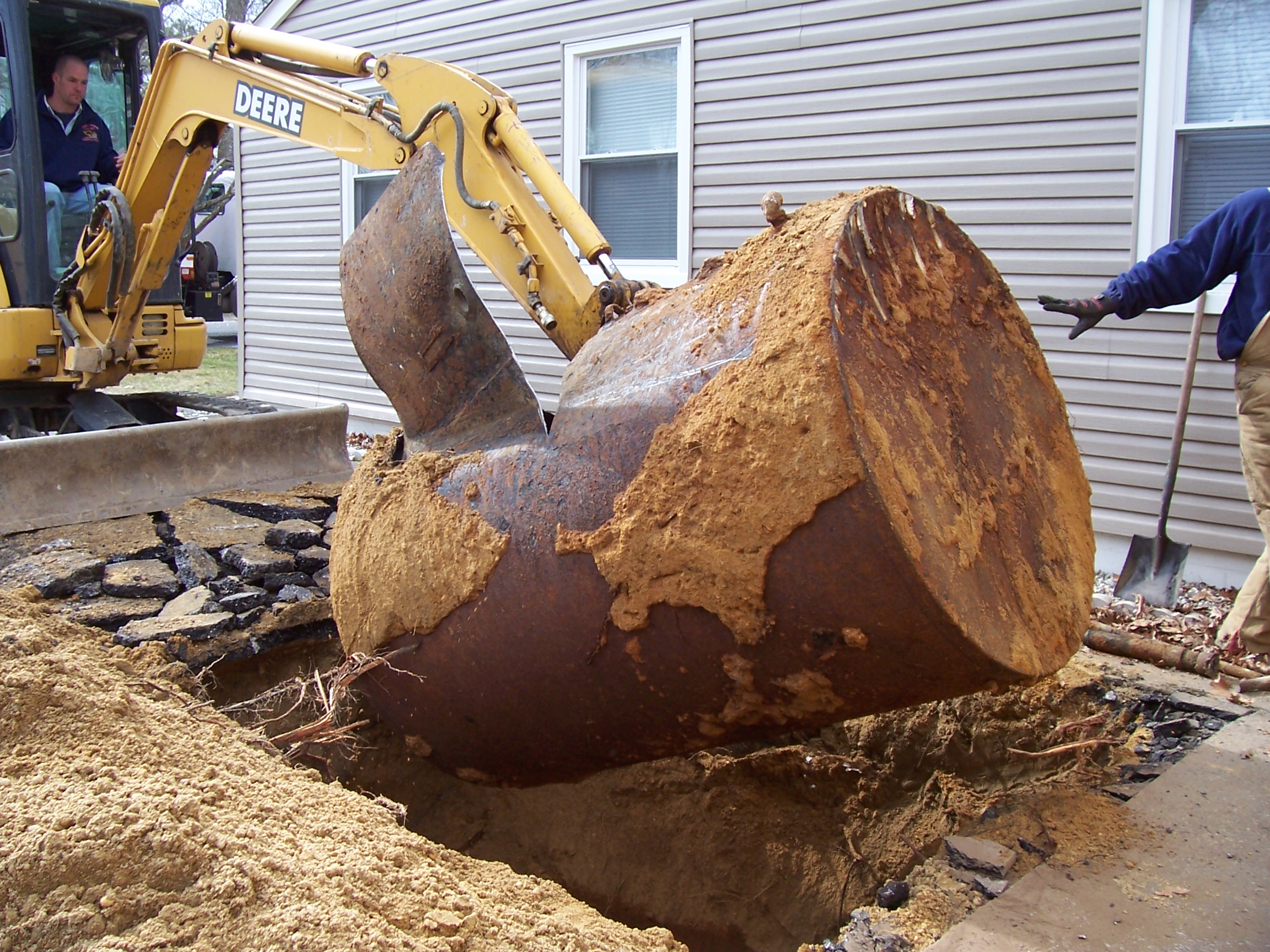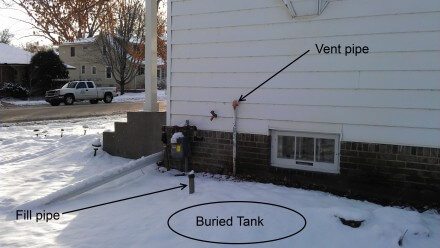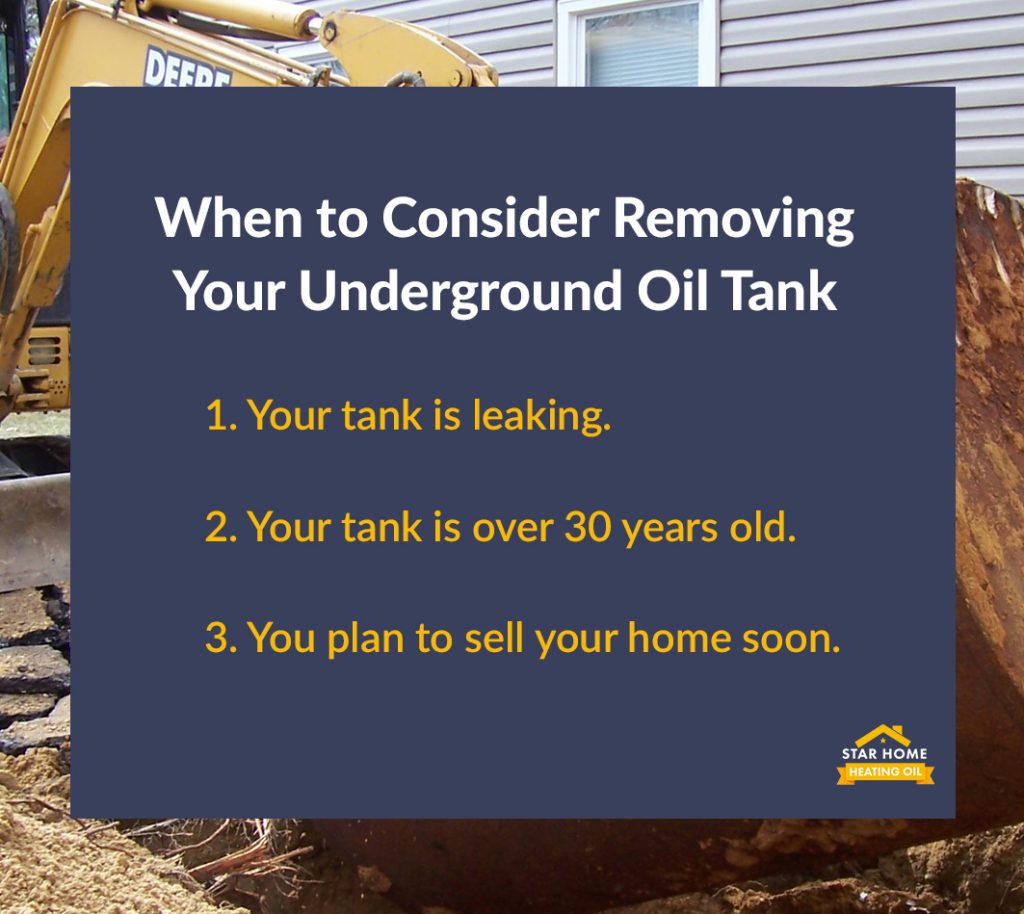Do I Have to Remove My Underground Oil Tank?
Does your home have an underground heating oil tank? If so, you may be wondering if you need to eventually replace it with something above ground. In this article, we’ll take a look at how you can identify whether or not your tank is buried, how it impacts you, the risks involved, and the associated costs with potential removal.

Do I Have an Underground Oil Tank?
Every oil-heated home is equipped with an oil tank. You may have a 275 gallon tank, 330 gallon tank, 500 gallon tank, or so on. Sizes will vary.
Regardless of your tank size, if your home is heated with oil, you will need to order fuel deliveries to ensure your fuel tank stays equipped with fuel otherwise, you may face heatless nights and cold showers unnecessarily.
Tanks are most often located above-ground. We most commonly see them stored in a basement, garage, crawl space, or just outside the house. Occasionally, however, some heating oil tanks are buried underground. Underground oil tanks were really popular in the 60s, 70s, and 80s as they provided homeowners with the ability to keep the fuel storage out-of-sight.
After many decades, environmental regulators started to recognize the risk of underground oil tanks leaking. Leaks from underground oil tanks could contaminate the soil, water supply underneath, and more.
Due to the environmental hazard this proposed, homeowners and new home developers began shifting to above-ground oil tanks.
This means that if your house was built in the 1980s – today, chances are that your tank is located above ground. If your home was built prior to the ‘80s, you may still have an underground oil tank.

What Does an Underground Oil Tank Look Like?
If you have an underground oil tank, you are not going to be able to see it in plain sight for obvious reasons. But you can quickly identify signs of it by looking for the tank’s fill pipes.

Pipes like these that stick out of the ground are a good indication that an underground oil tank is present on your property. The fill pipe (left) allows oil to be pumped into the tank. The vent pipe (right) allows air to escape from the tank while the oil is being added.
Should I Remove My Underground Oil Tank?
Weighing the decision whether or not to remove your underground oil tank can be tough. There are a variety of reasons that you might want to consider removing your underground tank and replacing it with a tank that lives above ground.

Tank Is Leaking
The most common reason to remove an underground tank is to prevent leaking. Of course, leaks are a concern due to the contamination they can cause to the soil surrounding.
Tank is Over 30 Years Old
Like all equipment, tanks have a limited useful life span and will eventually need to be replaced or removed. Generally speaking, if your tank is 10 or 15 years old, it is probably still operating well and not leaking.
However, it is important to remember that the likelihood of a leak will increase as the tank ages. If your tank is over 30 years old, it might be a good idea to get ahead of any issues. Leaks and the resulting damage can be costly to repair.
You Plan To Sell Your Home Soon
Because underground oil tanks are outdated, they can end up being a turnoff to potential buyers. This is because new homeowners know they will most likely need to deal with the cost and effort to remove the underground tank. Then they will need to replace it with something more up-to-date above ground.
Some banks will not mortgage a property with a buried oil tank due to the potential liability. Replace your tank with an above-ground option that poses much less of an environmental risk.
How Much Does It Cost to Remove an Underground Oil Tank?
Removing an underground oil tank can cost between $1,000 – $5,000 depending on the size of the tank, its condition, and how easily it can be accessed. But if the tank has leaked oil, cleanup costs can run into tens of thousands.
It is best to shop around for several price quotes. Contractors who specialize in underground tank removals will visit your home to determine where your tank is located and assess the obstacles they may encounter to complete the job.
Be sure to check references before hiring anyone.
Can I just Empty My Oil Tank and Leave it Underground?
Technically speaking, yes. You can empty your tank and leave it underground so long as other certain measures are taken.
If an underground tank is to be removed, the vent line and fill line must also be removed or the fill line must be capped with concrete.
If the underground tank is to be closed in place (that is, filled with an inert material such as sand), the vent lines must remain open and intact and the fill line capped or removed.
Replace Your Heating Oil Tank Before It Leaks
If you own an underground tank that is over 30 years old, your best bet is to get ahead of any potential issues by consulting with a reputable tank removal company to figure out a game plan for removing, and replacing, your oil tank.
Install a new above ground heating oil tank – preferably inside the house. Indoor oil tanks are not subject to the elements and will last much longer than outdoor tanks. From there, be sure to order your heating oil online to keep your family nice and warm.


